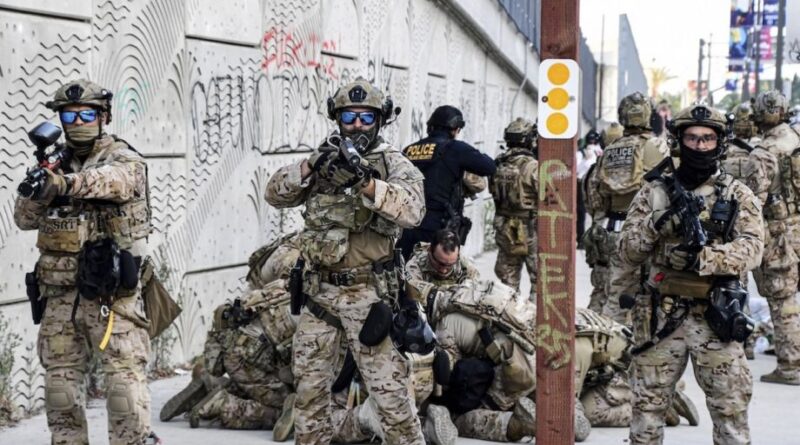National Guard Withdrawal: Trump’s Military Reduction in Southern California Explained
There has been an observable reduction in the military forces deployed by former President Trump in Southern California, a trend that commenced on June 7. It is noteworthy that at the peak of this military presence, almost 5,000 National Guard members were activated and sent to the Los Angeles region.
The Pentagon, on a recent Wednesday, declared it was drawing down more than a thousand soldiers who had been stationed in Los Angeles in June. This continuance of the reduction signals the latest step backward from the contentious position President Trump held over the National Guard’s deployment in Southern California.
The reapportioning of approximately 1,350 National Guard members comes in the wake of the release of thousands of other troops in the preceding weeks. The chief Pentagon spokesperson, Sean Parnell, announced through a press statement that a residual force of about 250 Guard soldiers would remain stationed in Los Angeles to safeguard federal personnel and assets.
The bulk of the California National Guard’s 49th Military Police Brigade was demobilized with just around a week remaining from what the White House had projected as a 60-day tour of duty, commencing from June 7.
Historically, this deployment saw nearly 5,000 National Guard members federalized and instructed to help calm the upheaval in Los Angeles in response to protests triggered by immigration raids. They were also assigned to provide security for federal agents supervising these raids.
The Democratic leadership in the state leveled accusations against the Trump administration, holding them accountable for inciting demonstrations by dispatching secretive federal agents to places of work such as carwashes to apprehend immigrants. The administration was also criticized for leveraging public outcry over the raids to justify recommendations for military mobilization.
The Mayor of Los Angeles at the time, Karen Bass, likened the deployment to a ‘military occupation.’ In parallel, Gov. Gavin Newsom initiated legal proceedings against federal representatives, arguing that the deployment constituted an illegal application of federal forces within the country, which had distracted the National Guard from their crucial duties.
Data released by the governor’s office on that Wednesday revealed a noteworthy decrease in fentanyl confiscations in the wake of the deployment. This redirection of military personnel impacted roughly a third of the 450 Guard members committed to a state-level counterdrug task force, causing the task force’s efforts to take a back seat.

